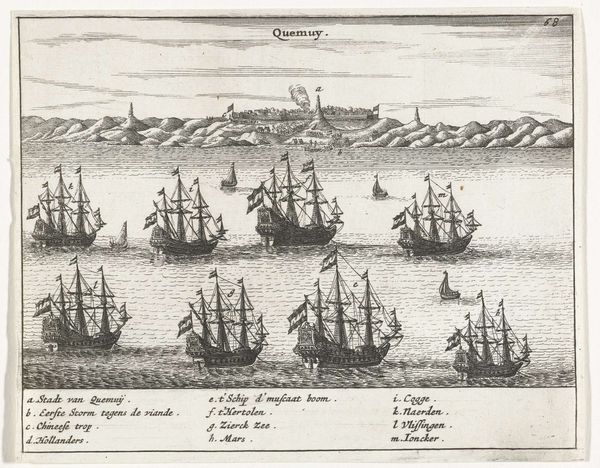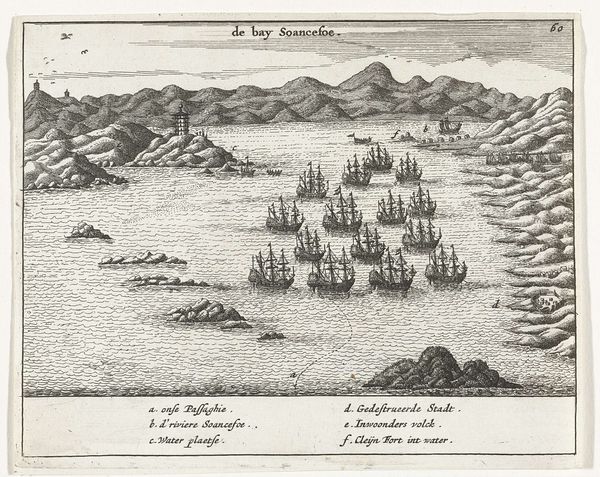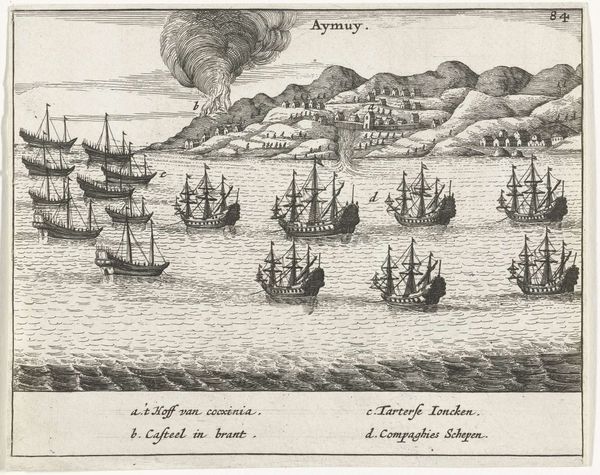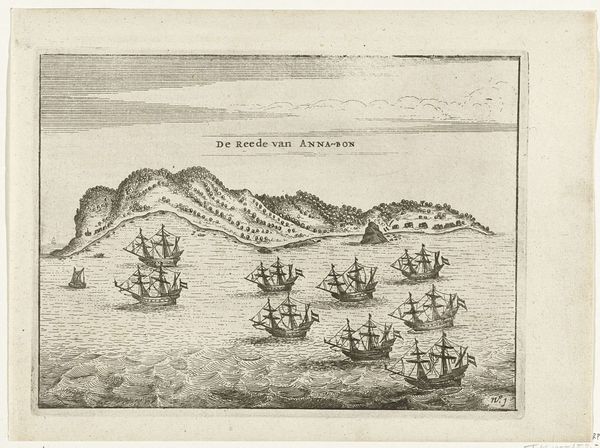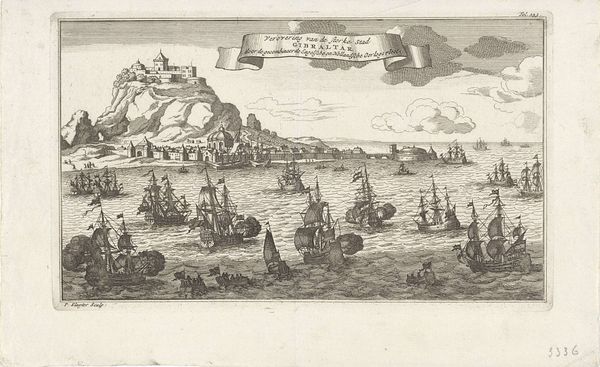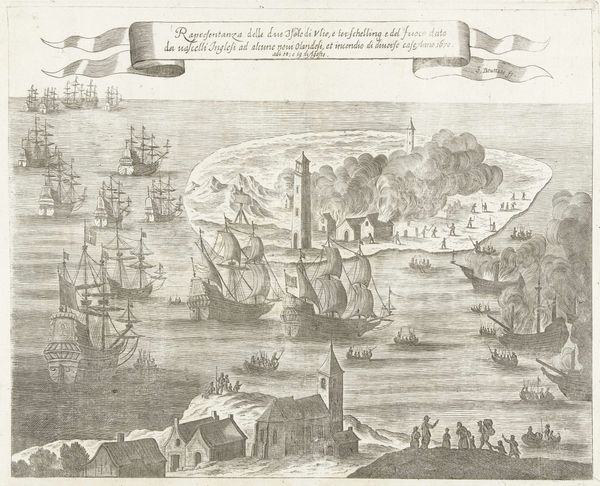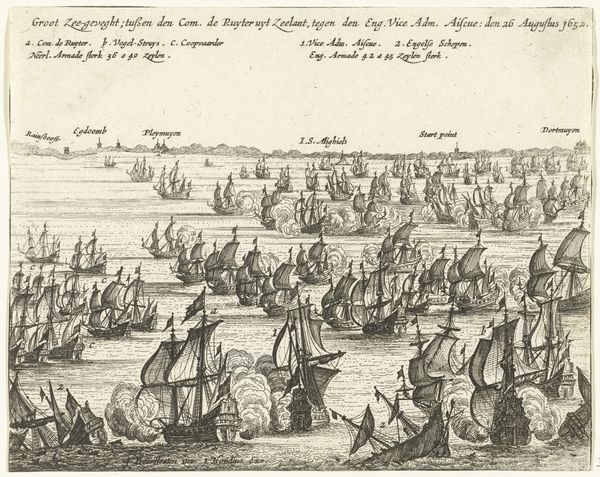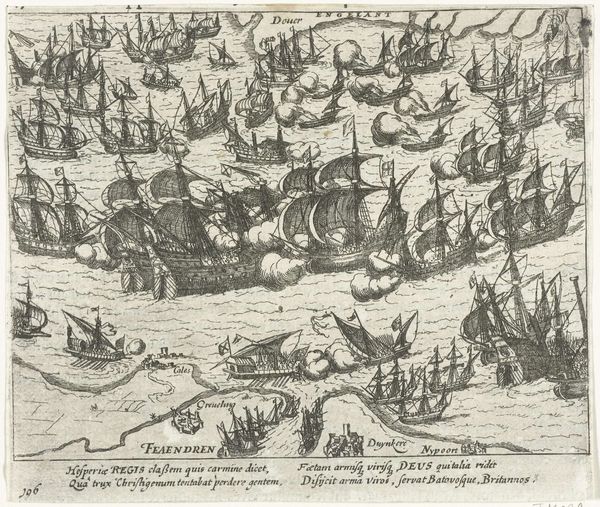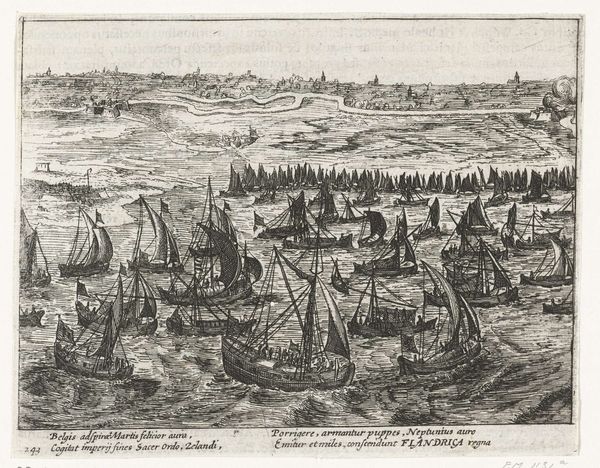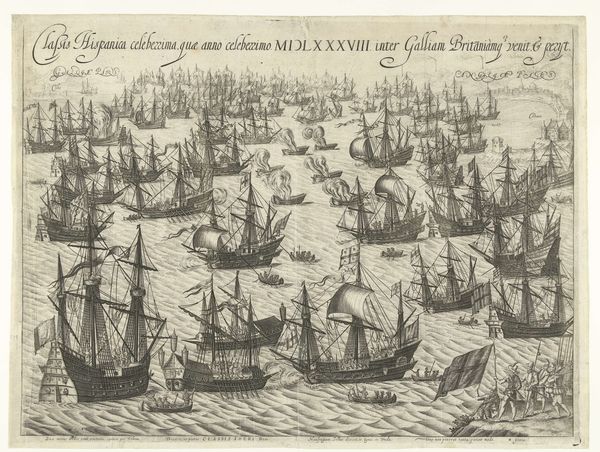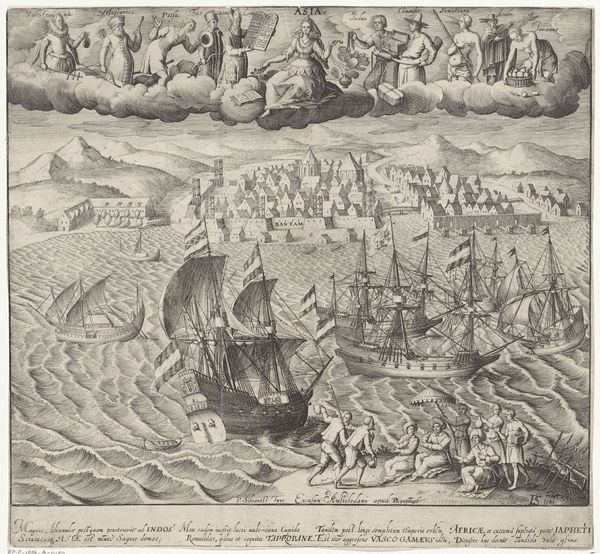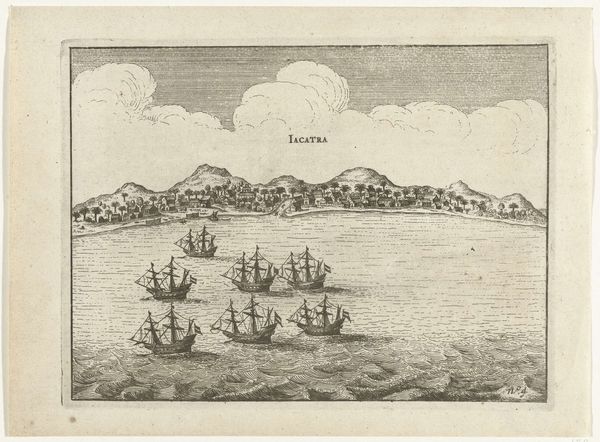
print, etching, engraving
#
narrative-art
#
dutch-golden-age
# print
#
etching
#
landscape
#
geometric
#
cityscape
#
history-painting
#
engraving
Dimensions: height 134 mm, width 167 mm
Copyright: Rijks Museum: Open Domain
Curator: Here we have "Vloot bij Goutsoe (China), 1663", dating to 1670. It's an engraving, offering a meticulously rendered depiction of a Dutch fleet positioned off the Chinese coast. Editor: It feels… calculated. Ordered. Not quite celebratory, but definitely imposing. There's a clear sense of power conveyed through the sheer number of ships and their precise arrangement in the harbor. Curator: Indeed. Consider the etcher’s labor. Each line painstakingly carved into the plate, then inked and pressed, to produce an image intended to circulate widely. What this says about the production of printed material and accessibility in spreading information is important here. It’s far from a quick sketch. Editor: Precisely. These images played a significant role in shaping public perception of Dutch mercantile power and global reach. Think about the intended audience – presumably back in the Netherlands – receiving these dispatches from faraway lands, solidifying narratives of exploration and trade dominance. Curator: And not just trade, but power projection, visibly reinforced through the weaponry on those ships. We need to examine how the image functions in Dutch social context and within the growth of early capitalist modes of production and exchange. What’s at stake materially to render China knowable, and appropriable in that early-modern Dutch imaginary. Editor: Good point, and how this kind of controlled image-making fed into the institutional power structures that upheld these global ventures. Think about how galleries displaying similar works were visited, thus helping to legitimize a certain worldview, one that positioned Europe at the center and legitimized these foreign adventures. It also illustrates the era's nascent awareness of global positioning. Goutsoe—modern Guangzhou—is identified so this image isn’t just of some foreign land, but is presented with geographic specificity. Curator: It definitely presents a sanitized view of complex interactions and possible exploitation that often underpinned this type of mercantile operation. These are all pieces contributing to a highly manufactured spectacle of control and abundance for European consumption, carefully excluding any sign of hardship or resistance. Editor: True, a potent reminder of the power of visual culture in shaping both historical narratives and present-day understanding. It provides a lens through which we can appreciate how empires were constructed and understood through popular art and image making, creating historical narratives.
Comments
No comments
Be the first to comment and join the conversation on the ultimate creative platform.
